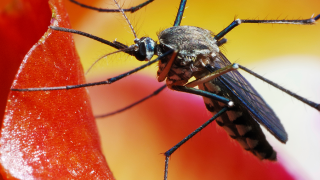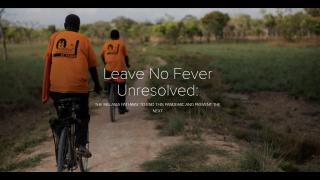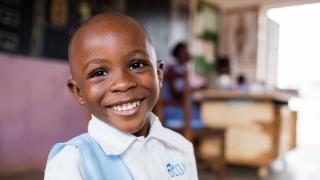
What is malaria and who does it affect?
Malaria is caused by Plasmodium parasites. The parasites are spread to people through the bites of infected female Anopheles mosquitoes, called "malaria vectors." There are five parasite species that cause malaria in humans, and 2 of these species – P. falciparum and P. vivax – pose the greatest threat.
In 2019, P. falciparum accounted for over 99% of malaria cases in the WHO African Region, 53 per cent of cases in the WHO South-East Asia Region, 73 per cent of cases in the Eastern Mediterranean and 68 per cent in the Western Pacific. In the WHO Region of the Americas P. vivax is the predominant parasite, representing 76% of malaria cases.
In most cases, malaria is transmitted through the bites of female Anopheles mosquitoes. There are more than 400 different species of Anopheles mosquito; around 30 are malaria vectors of major importance. All the important vector species bite between dusk and dawn, though some vectors also bite at other times of the day. The intensity of transmission depends on factors related to the parasite, the vector, the human host, and the environment.
Transmission is more intense in places where the mosquito lifespan is longer and where it prefers to bite humans rather than other animals. The long lifespan and strong human-biting habit of the African vector species is the main reason why over 90% of the world's malaria cases are in Africa.
Transmission also depends on climatic conditions that may affect the number and survival of mosquitoes, such as rainfall patterns, temperature, and humidity. In many places, transmission is seasonal, with the peak during and just after the rainy season. Malaria epidemics can occur when climate and other conditions suddenly favour transmission in areas where people have little or no immunity to malaria. They can also occur when people with low immunity move into areas with intense malaria transmission, for instance when refugees move from a country without malaria to a country with malaria.
In 2019, nearly half of the world's population was at risk of malaria. Most malaria cases and deaths occur in sub-Saharan Africa. However, the WHO regions of South-East Asia, Eastern Mediterranean, Western Pacific, and the Americas are also at risk.
What progress has been made to eliminate malaria?
In the last two decades, there has been an unprecedented period of success in the fight against malaria. Since 2000, 1.5 billion malaria cases have been averted and 7.6 million lives saved, 82 per cent of cases and 94 per cent of deaths averted were in the Africa region.
Malaria has been one of the biggest returns on investment since the beginning of the millennium. This was due to robust political commitments, advances in innovation and significant increases in funding. The increased investment in research and innovation brought about new tools to control and eliminate the disease such as:
- Insecticide-treated nets (ITNs), to protect against being infected with malaria
- Rapid diagnostic tests (RDTs) to quickly diagnosis whether a fever is caused by malaria
- Artemisinin combination treatments (ACTs) to effectively treat those with the disease and prevent onwards transmission
During this period, funding mechanisms such as the Global Fund and the US President’s Malaria Initiative were created to help roll out these new tools and make sure they get to where they are needed.

What can be done about malaria?
Vector control is the main way to prevent and reduce malaria transmission. If coverage of vector control interventions within a specific area is high enough, then a measure of protection will be conferred across the community.
The WHO recommends protection for all people at risk of malaria with effective malaria vector control. Two forms of vector control – insecticide-treated mosquito nets and indoor residual spraying – are effective in a wide range of circumstances.
Despite having the tools to prevent and cure malaria the disease continues to claim over 400,000 lives each year, the majority of which are children under five years old.
While there was great progress made during the last two decades most of this was made between 2000 and 2015. Since 2015 there has been a stalling in progress. A funding shortfall at both the international and domestic levels poses a significant threat to future gains. In 2019, total funding reached US$3 billion against a global target of US$ 5.6 billion. Funding shortages have led to critical gaps in access to proven malaria control tools. In 2019, the global tally of malaria cases was 229 million, an annual estimate that has remained virtually unchanged over the last 4 years. The disease claimed some 409,000 lives in 2019 compared to 411,000 in 2018.
Of those countries that have successfully eliminated malaria, no country has reached elimination without country leadership and a robust surveillance system. To reach elimination it is key that there is:
- Improved surveillance, monitoring and evaluation, as well as stratification by malaria disease burden, are required to optimize the implementation of malaria interventions.
- Equity in access to health services especially for the most vulnerable and hard-to-reach populations is essential.
- Strengthen health workforce and malaria expert base.
- Innovation in tools and implementation approaches will enable countries to accelerate their progression along the path to elimination.

What are Neglected Tropical Diseases and who do they affect?
Neglected Tropical Diseases (NTDs) are a group defined by the World Health Organization (WHO) of 20 diseases and disease groups caused by viral, bacterial, fungal, protozoan and parasitic infections, and envenoming.
These varied conditions, which cause suffering and death, have been grouped together due to their tendency to affect groups and individuals living in conditions of poverty, their association with stigmatisation and exclusion, and their consequent historical neglect within public health systems.
Affecting over a billion people across 149 countries, NTDs represent a significant public health burden and undermine the achievement of the sustainable development agenda by exacerbating poverty and inequality.
What progress has been made in reducing NTDs?
Since the publication of the WHO’s first roadmap for the prevention and control of NTDs, in 2012 significant process has been made in tackling NTDs, including:
- 600 million fewer people require interventions against several NTDs than in 2010
- 43 countries have eliminated at least one NTD as of 2020
- 199 countries, areas and territories certified free of dracunculiasis (Guinea worm), with only 27 cases remaining worldwide in 2020
- A 74% decrease in the number of cases of the late, blinding stage of trachoma since 2002, down to 2 million in 2020
- Over 1 billion people have received treatment for NTDs annually since 2016
Why is it important the UK parliament and government take action on NTDs?
- Equity: By affecting the poorest and most marginalised people in the world, neglected tropical diseases (NTDs) serve as a proxy for poverty and disadvantage. They affect the most vulnerable and lead to stigma and discrimination, especially of girls and women. They are often neglected by research and undermine health and social equity globally. This includes delaying progress towards the achievement of sustainable development goals (SDGs). NTDs are directly related to the achievement of stated historical and current UK government priorities, including food safety and nutrition, girls’ education, universal health coverage (UHC) and environmental sustainability.
- Economy: NTDs represent an economic burden on individuals and societies, by exacerbating poverty, hampering economic activity, and affecting physical growth and development. They, therefore, impact the ability of countries to participate in global markets and to reduce debt and reliance on external development assistance.
- Global Health Security and Pandemic Preparedness: Efforts to support pandemic preparedness warrant a greater focus on preparedness for other diseases, including NTDs. Poverty related diseases often carry the risk of becoming epidemic, and levels of resistance to many treatments are increasing. At the same time, climate change and migration are increasing the current and future burden of these diseases in low-and middle-income and high-income countries.
- UK Expertise: The UK has long been a science superpower, driving progress in global health and supporting the delivery of ground-breaking progress in global health R&D. From the NHS to science and technology industry partners, to research institutions and academia and Product Development Partnerships (PDPs), the UK has a strong health innovation sector with decades of experience ensuring impact and access to the outcomes of research. However, there is urgent unfinished business when it comes to equitable access to health tools and technologies for NTDs. Global Britain is well placed to lead on overcoming this gap.





